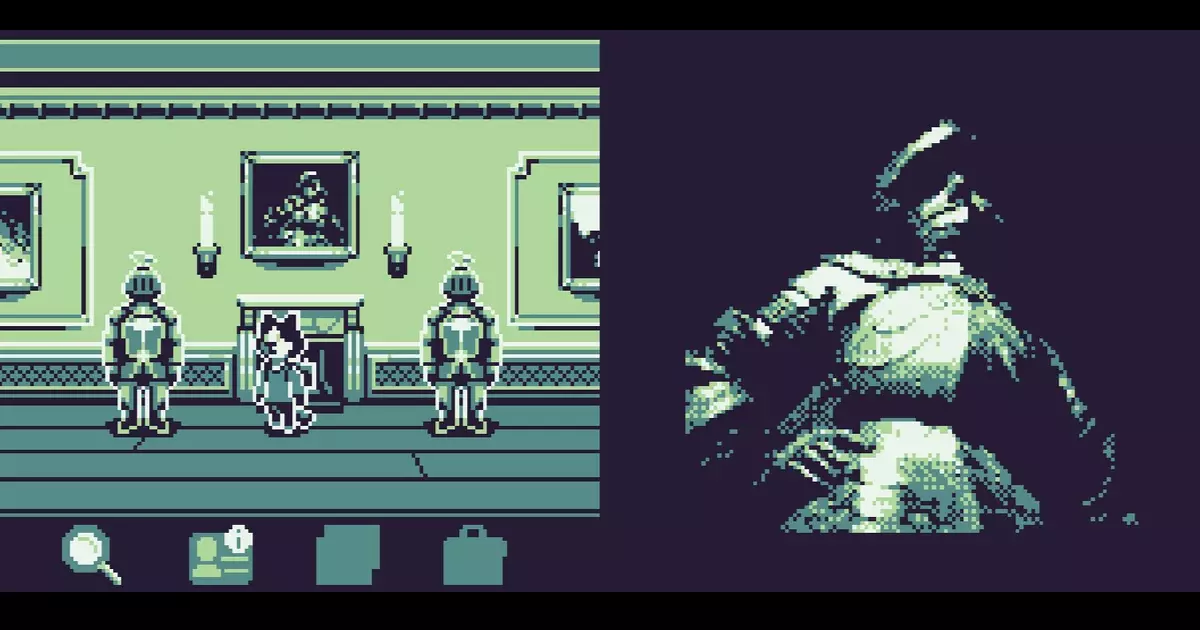As a former Game Boy enthusiast who missed out on the Game Boy Camera craze, I now find myself intrigued by the resurgence of interest in this iconic peripheral among indie PC developers. One such developer, Catharine Graffam, has created a captivating gallery project called GB Camera Gallery: Mystery Show, which pays homage to the quirky aesthetics of the Game Boy Camera. This article will delve into the impact of the Game Boy Camera on indie PC development and explore the creative possibilities it offers to a new generation of artists and creators.
Released in 1998, the Game Boy Camera was a groundbreaking peripheral that allowed Game Boy owners to capture photos directly on their devices. Despite its primitive capabilities by today’s standards, the Game Boy Camera was ahead of its time as the world’s smallest digital camera. The camera featured unique functions such as a ball head that could swivel 180 degrees, making it one of the first selfie cameras in existence. Photos taken with the Game Boy Camera were initially limited to sharing on Game Boys via link cable or printable using the Game Boy printer. However, with modern technology advancements, it is now possible to transfer these photos onto a computer using third-party hardware.
Catharine Graffam’s GB Camera Gallery: Mystery Show showcases the artistic potential of the Game Boy Camera through a collection of photos displayed in a spooky mansion setting. The exhibition features images created by Graffam’s friends, which embody the nostalgic and whimsical charm of the Game Boy Camera’s limited palette and resolution. The gallery project serves as a testament to the enduring appeal of retro gaming peripherals and their influence on contemporary art and design.
Despite its technical constraints, the Game Boy Camera offered users a range of creative tools and functions to experiment with. In addition to capturing still images, the camera cartridge included features such as a paint tool, time-lapse, panorama function, and the ability to create animations. One particularly innovative feature was the ‘fusion’ effect, which enabled users to merge multiple photos to create pseudo double exposures. The Game Boy Camera also included a music creation program, adding another layer of creative potential to an already versatile device.
Preservation and Legacy of Game Boy Camera
For those who wish to experience the nostalgia of the Game Boy Camera firsthand, there is the option to download GB Camera Gallery: Mystery Show or purchase a physical Game Boy cartridge version. The availability of these modern adaptations ensures that the legacy of the Game Boy Camera lives on, captivating a new generation of indie developers and artists who seek to explore its unique creative possibilities. Whether through digital downloads or physical cartridges, the Game Boy Camera continues to inspire and delight a diverse range of creators across different platforms.
The resurgence of interest in the Game Boy Camera among indie PC developers signifies a renewed appreciation for the innovative spirit of retro gaming technology. Catharine Graffam’s GB Camera Gallery: Mystery Show serves as a testament to the enduring appeal of the Game Boy Camera and its impact on contemporary artistic practices. As we celebrate the creative legacy of this iconic peripheral, we also recognize the importance of preserving its legacy for future generations of creators and enthusiasts.


Leave a Reply
You must be logged in to post a comment.